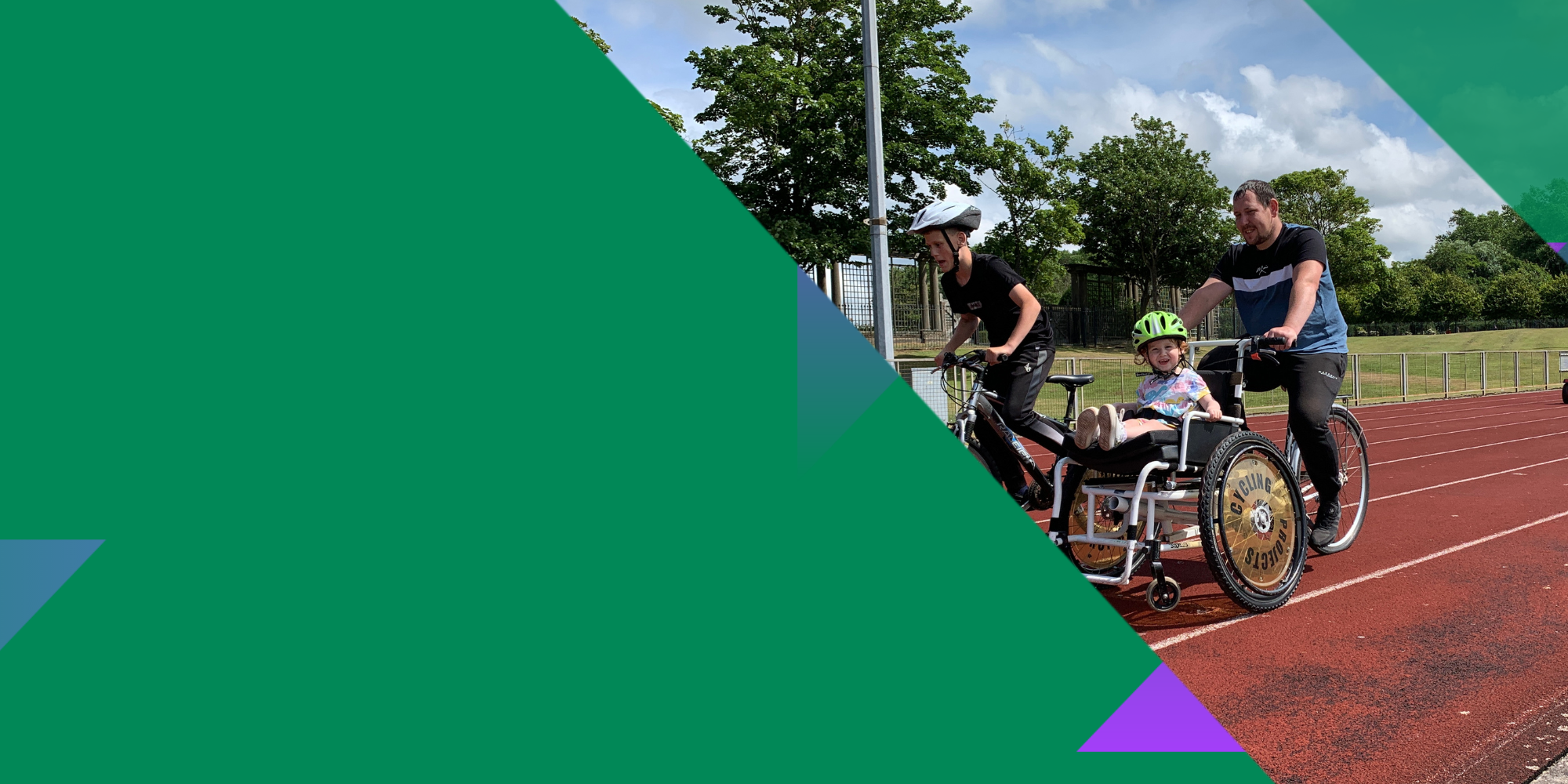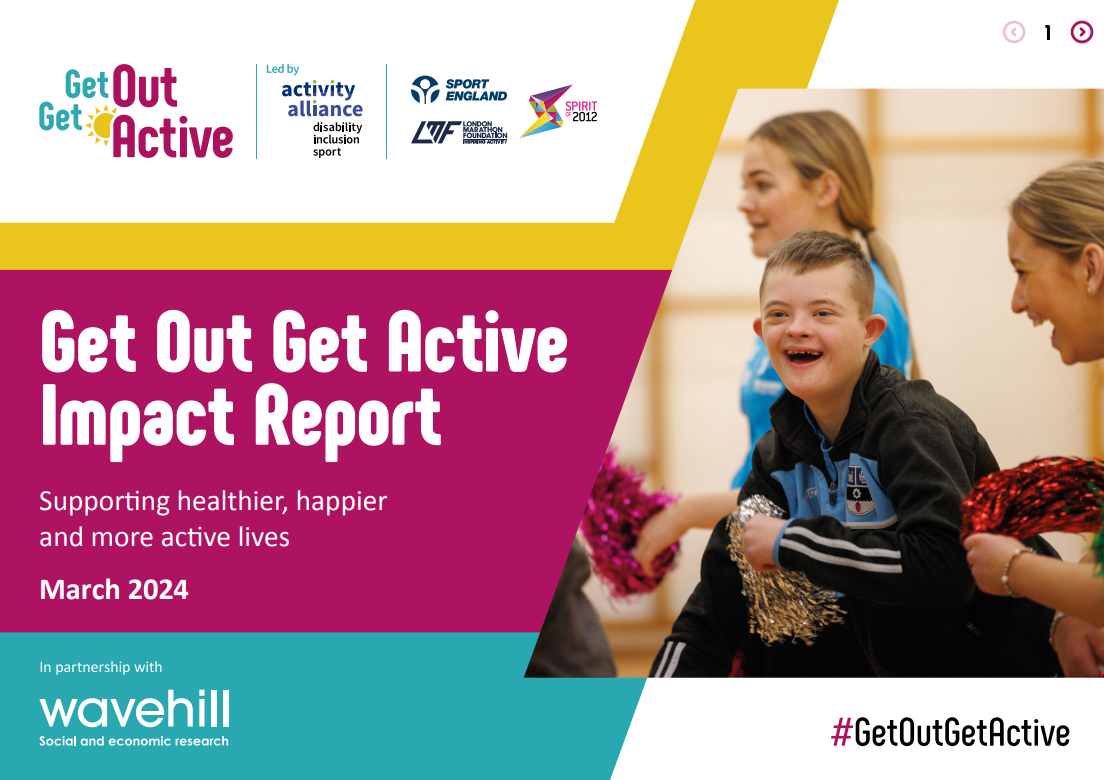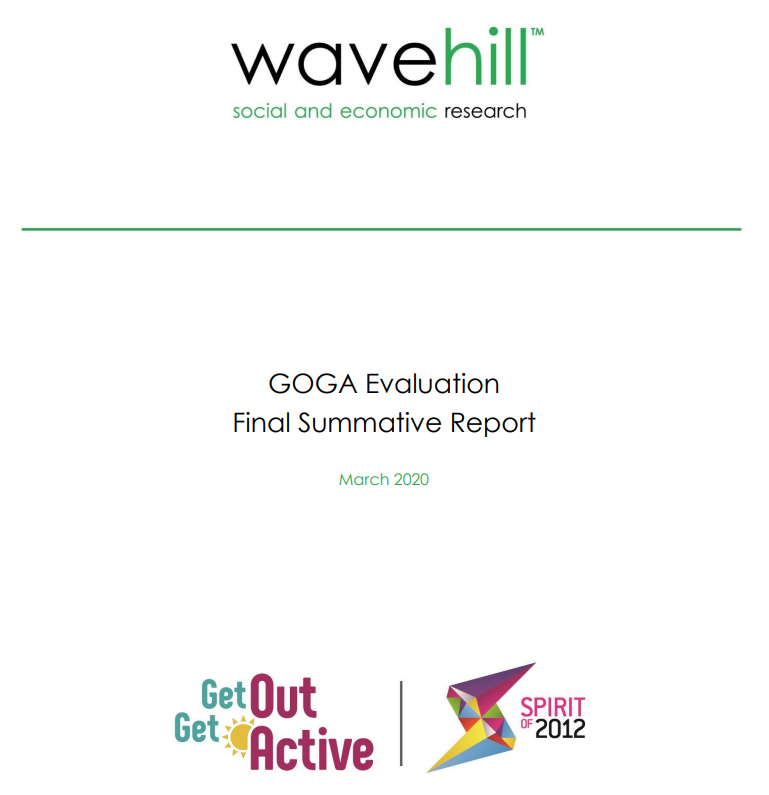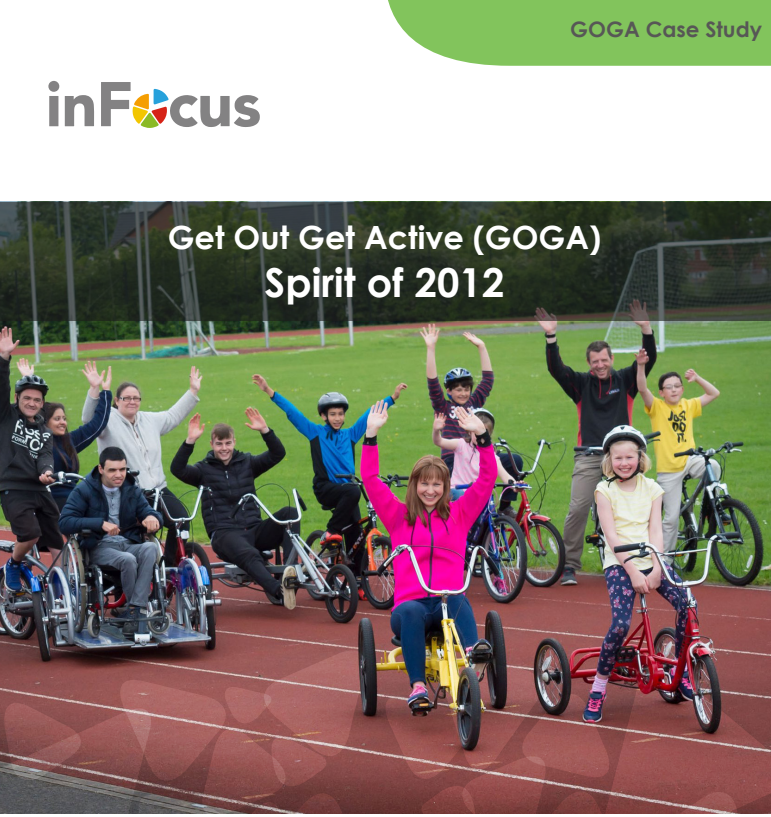Project summary
Get Out Get Active (GOGA) was Spirit of 2012’s largest investment and our flagship sport and physical activity work, through two grants totalling £7.5 million over 8 years to a UK-wide consortium, led by the Activity Alliance. Get Out Get Active was initially a four-year initiative developed to explore how to take a different approach to the sporting and physical activity legacy of major events in the run up to the Rio 2016 Olympics and Paralympics. With GOGA we deliberately steered away from aiming to get large numbers of people more active Instead the focus was on increasing participation for the very least active in fun and inclusive physical activity so that disabled and non-disabled people can enjoy a wide variety of recreational activity together. Previous research conducted by Activity Alliance (EFDS, as they were previously) indicated that 68% of disabled people would rather be active in an inclusive setting.
Due to the success of the first phase, in 2019 we awarded an additional £3 million to extend the programme for a further three years and its reach to new communities throughout the UK. Activity Alliance also secured an additional £1 million investment each from Sport England and London Marathon Charitable Trust to extend the project further.
Over the eight years GOGA was delivered in 19 localities in Phase 1 and 22 in Phase 2, working with local delivery partners from both sporting and non-sporting backgrounds to reach and sustain access to physical activity for least active groups in their communities. The approach is set out in the diagram, below:
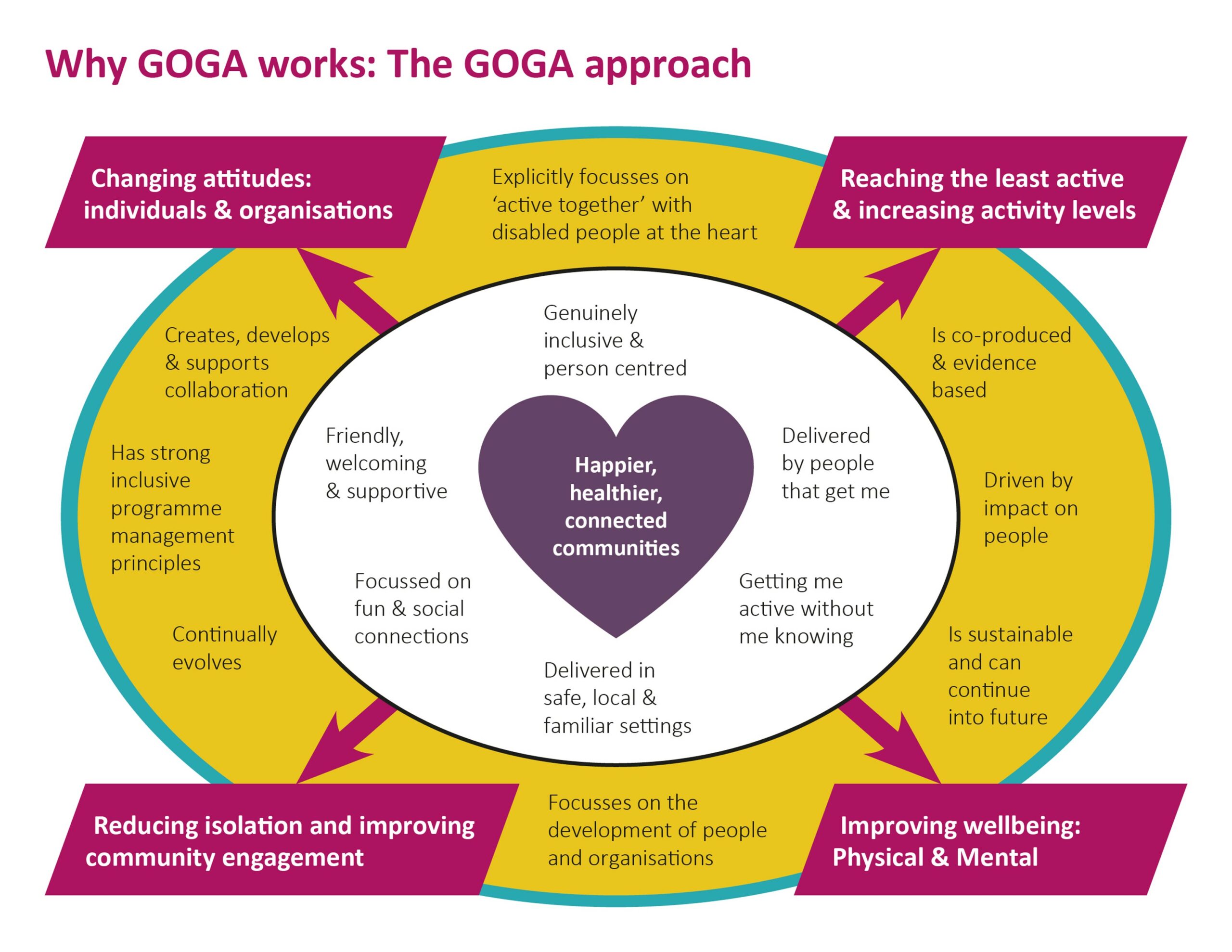
All GOGA funded activity had to be accessible for disabled and non-disabled people to participate in as equals.
Phase 1 focussed on engaging specific inactive groups. Examples of some activities that GOGA Phase 1 offered:
- Inclusive Family Sensory Walk in Northern Ireland
- Women only fitness sessions in Bradford Mosques
- Walking Netball in Nottingham
In Phase 1 there was also a focus on volunteering, working with Volunteering Matters to deploy volunteers on GOGA programmes to support inclusive activities.
“It gets us out of the house, it’s a way of meeting people and sitting down and talking to people while we’re having a meal, it’s the community that you’re mixing with that keeps you going and it gets my wife going as she’s taking part in some form of exercise which she wouldn’t otherwise do.”
Participant, Phase 1, Wigan
“I think it was doing it with such a range of people so I didn’t feel I was getting left behind with the things that I couldn’t do, everybody had different abilities so nobody was left out, everything was tailor made to each person and their own ability which was absolutely fabulous, I loved the way they adapted some of the exercise programmes to suit everybody involved in the class.”
Participant Phase 1, Thanet
Phase 2 built on the learning from Phase 1 and focussed more on working in partnership with local organisations to address the needs of their inactive communities. For example:
- Enabling the development of inclusive communities in the London Borough of Haringey, by using sport and physical activity to engage disabled and non-disabled young people and adults living in the most deprived areas of the borough. Activities were aimed at those affected by gang culture or violent crime.
- Enabled partners to have a specific focus on 55–75-year-olds by developing outreach resources to work with the dispersed villages making use of village halls and connecting with the wellbeing hub.
- Engaged with four distinct communities in Liverpool all of which shared the common challenge of being disproportionately disconnected from the City’s offer and active recreation. These communities included young people with caring responsibilities, LGBTQ+, Military Veterans and Universities all of which reported high mental health issues.
In Phase 2 the emphasis switched from mobilising volunteers to increasing the skills and experience of the local workforce in working with the least active and underserved communities, and there was also a strong focus on sustainability across three areas:
- Supporting individuals active for life
- Developing inclusive local system and practice
- Transferable learning between partners and projects in and beyond GOGA
The start of Phase 2 was significantly effected by the onset of lockdown restrictions due to the pandemic. This is particularly noteworthy given the disproportionate impact of Covid-19 on disabled people and the measures taken to mitigate its health impacts. The evaluation credits Spirit’s approach to encouraging experimentation, piloting, and a flexible approach to delivery with enabling the project to flex and continue to deliver despite the impact on beneficiaries ability to “get out and get active”.
“I think that [Covid-19] changed the way we ran the project but probably for the better. We had to focus more on partnership and would have duplicated provision if we weren’t forced to consult and map what was already out there.“ (GOGA Bassetlaw)
“The last 18 months have been extremely hard for a number of community groups and the provision of physical activity across the City and therefore having the resource and flexibility of the GOGA project to support activities to get back on their feet, or address gaps in provision or give capacity to new ideas and opportunities has been extremely invaluable.” (GOGA Nottingham)

